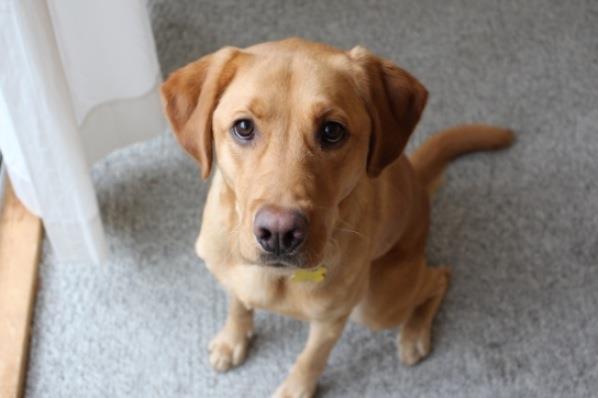Training Tips for the Labrador Retriever
Congratulations you and your family have a new pup.
Besides making sure that the Labrador is the dog for you… we recommend taking the time to find exactly the right breeder, rescue organization or shelter…
Choosing a calm puppy may seem counter-intuitive….
In fact you may have a better chance if you look at the parents! Find a breeder that produces dogs with a calm disposition.
If you go the route of a pure-bred, take the time to find a breeder that has records for good hip and ankle health as well. The Labrador due to it’s rigorous breeding background, has had a reputation for bad hip health, but with a little research you can help to avoid this problem.
A breeder should have health certificates for the parents and grandparents for both sides of the family.
In addition to DTO Training Modules, here are some tips to keep you and your pup on track for training.
From five months to a year gradually increase exertion levels for your puppy to allow for healthy bone development.
Intensive hikes or strenuous activity like Agility Training are NOT recommended before your puppy is one year. Avoid high jumps, especially repetitive jumps on to concrete or other similarly hard surfaces. After a year your dog’s bones should be strong and fully developed.
Whether you have brought home your puppy to be a family pet, or have working goals your dog will need lots of exercise. The Labrador Retriever is prone to being overweight. The Labrador (or a lab mix) is a good breed to keep the human members of the family in shape too. Count on more than an hour of walking a day! Always. High energy dogs really need at least 2 hours walk a day. If you engage your dog with active training and play you are setting your dog up for optimal health.
Check out the essential DTO crate training tips.
Of course a selection of toys for your pup is a great idea!
Regular training and mind exercise is crucial to keep this dog in check, especially if you will be keeping this dog at home alone for extended periods.
Consider Rally-O and other training activities for you and your dog. Agility training is a high energy game for humans alike (when the time is right!). This is a great way to exert the mind and body of your pup. If you must go away without your dog, you will feel better if you can transfer over activities such as field training or rally-training to their trainer, family friend or whoever will be taking care of your pet.
Keep in mind what the Labrador is bred for. They were originally bred to retrieve fish that had fallen from the ships for the Canada Maritime fishermen. They needed a soft mouth for this. Later their training/breeding included bird retrieval for hunters and ornithologists. The labrador retriever can be very mouthy. Check out Dove’s tips to prevent chewing. Train your dog to fetch and to enjoy the water. These are instinctive activities for the lab.
“Soccer” is a great activity. 🙂
Ask your trainer about treadmill training. It’s always good to introduce your pet under guidance. Only a trained professional would realize possible hindrances and safest methods for your dog so that both you and your dog can meet long-term training goals . Give yourself a running chance at success!
We wish you and your dog a long happy life.
Check out our complete dog training program for a full library of tips for your dog’s health, as well as the full training library.




















